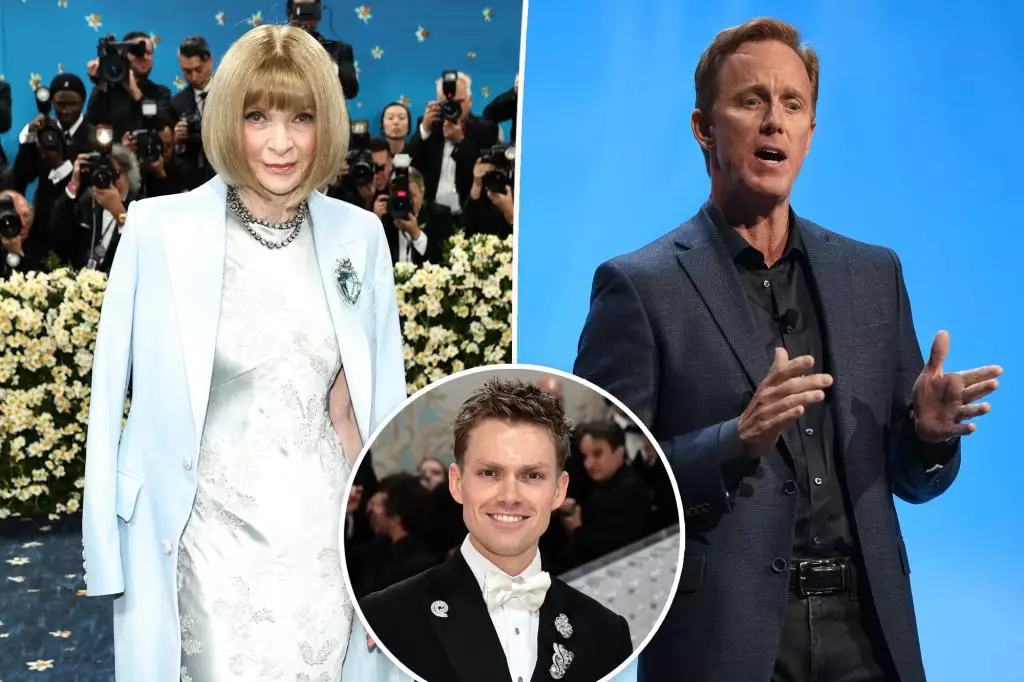The world of high fashion and elite journalism is never short of drama, and the recent appointment of Mark Guiducci as the new global editorial director of Vanity Fair exemplifies this sentiment perfectly. Anna Wintour, the formidable force behind Vogue and a revered figure in the fashion industry, has made a move that algunos insiders believe has tapped into deep-seated tensions within Condé Nast. While many may consider this a typical reshuffling of editorial power, the circumstances surrounding Guiducci’s appointment reveal a more complex narrative of influence, loyalty, and potential discord among the esteemed publications and their leaders.
The Backstory: A Family Connection?
The operatic nature of Wintour’s choice is amplified by the revelations about Guiducci’s close ties to her daughter, Bee Shaffer. Such connections have inevitably led to whispers of “nepotism,” highlighting a growing concern about the dynamics of favoritism that play a significant role in high-stakes editorial appointments. This discussion is not merely speculative; it casts a long shadow over the legitimacy of Guiducci’s new role. Did Wintour’s affection for Guiducci cloud her judgment, or did she genuinely perceive him as the right candidate to lead one of Condé Nast’s flagship brands? Whatever the case, the murmurings of dissent from “upset” staffers showcase a workplace mood rife with uncertainty.
Furthermore, the allegation that Wintour “went rogue” during the selection process casts doubt on the collaborative leadership approach purportedly espoused by Condé Nast’s CEO, Roger Lynch. While insiders have asserted that Lynch was indeed involved in the appointment process, the absence from the announcement meeting raises questions about authority and communication within the overarching corporate structure. This move seems to flout standard political protocols, suggesting a broader rift between editorial independence and corporate governance.
Guiducci’s Background: A Double-Edged Sword
Guiducci arrives at Vanity Fair with a formidable pedigree, having previously served as the editor-in-chief of Garage magazine and holding the creative editorial director title at Vogue. His experience is undoubtedly commendable, and his enthusiasm is palpable in his initial statements, where he articulated the honor of returning to a brand that shaped his early career. Nevertheless, questions linger about whether this new role is more about reassuring Wintour’s influence than fostering a fresh perspective for the magazine.
Industry elites focus on the notion that Guiducci’s appointment may signal a shift in Vanity Fair’s editorial direction. If Wintour aims to steer the magazine towards a more controlled and predictable landscape—one that mirrors her own editorial ethos—it raises concerns about the potential stifling of creativity and innovation that Vanity Fair is known for. The question remains whether Guiducci, branded as a “nepo hire,” possesses the autonomy to diverge from Wintour’s considerable shadow or if he will be perpetually expected to align with her vision.
Reactions and Implications: A Galvanized Workforce?
The staff’s reaction to Guidelines’ hiring can’t be understated; reports of a “funeral-like” atmosphere signal discontent among employees who feel sidelined in the decision-making process. When personnel internally refer to Guiducci as a “nepo hire,” it reflects deep-seated frustrations regarding meritocracy and professional growth opportunities in an industry where connections often reign supreme over qualifications. Employers should monitor morale carefully, as such negativity could easily lead to retention issues and diminished creativity.
Moreover, if Wintour desires someone she can dictate terms to, this may have longer-term implications for the creative vision and contributions from the editorial team. The essence of Vanity Fair’s identity lies in its ability to uniquely blend sharp journalism with dynamic cultural commentary. If Guiducci’s tenure is regarded as merely an extension of Wintour’s control, the magazine risks losing the cultural relevance that has defined it for decades.
What Lies Ahead?
As the industry watches to see how this unfolding narrative develops, one undeniable truth is abundantly clear: the tumultuous path ahead for Mark Guiducci and Vanity Fair is fraught with opportunity and challenges. Balancing the weight of legacy expectations with fresh editorial vision is no minor task, especially when the corporate landscape is as charged as it currently stands in the wake of this appointment. The stakes are not just personal, but also deeply institutional, impacting corporate culture while potentially redefining one of journalism’s most iconic platforms. As the pages turn, all eyes remain glued to what choices Guiducci will make and how they will resonate across Condé Nast and beyond.

